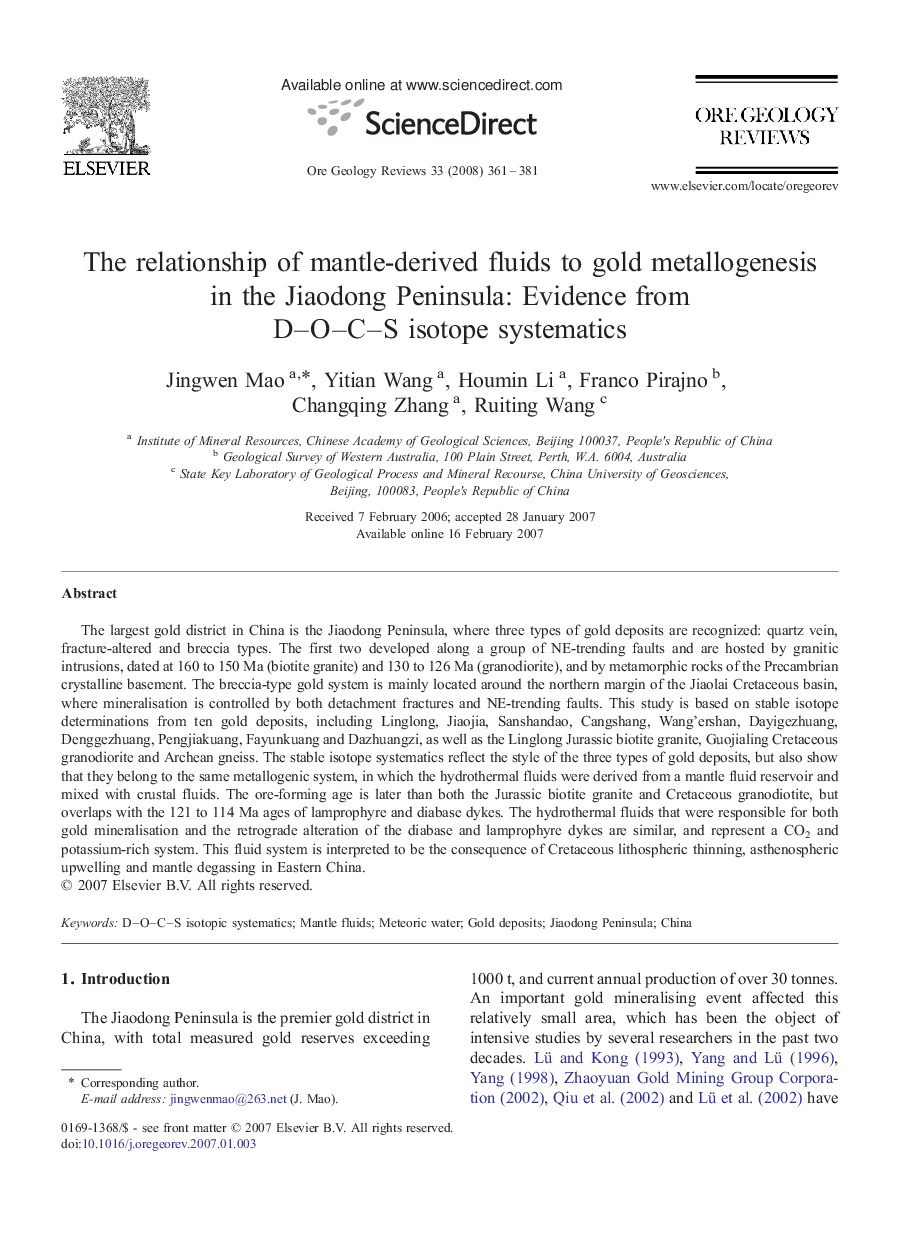| کد مقاله | کد نشریه | سال انتشار | مقاله انگلیسی | نسخه تمام متن |
|---|---|---|---|---|
| 4698027 | 1637267 | 2008 | 21 صفحه PDF | دانلود رایگان |

The largest gold district in China is the Jiaodong Peninsula, where three types of gold deposits are recognized: quartz vein, fracture-altered and breccia types. The first two developed along a group of NE-trending faults and are hosted by granitic intrusions, dated at 160 to 150 Ma (biotite granite) and 130 to 126 Ma (granodiorite), and by metamorphic rocks of the Precambrian crystalline basement. The breccia-type gold system is mainly located around the northern margin of the Jiaolai Cretaceous basin, where mineralisation is controlled by both detachment fractures and NE-trending faults. This study is based on stable isotope determinations from ten gold deposits, including Linglong, Jiaojia, Sanshandao, Cangshang, Wang'ershan, Dayigezhuang, Denggezhuang, Pengjiakuang, Fayunkuang and Dazhuangzi, as well as the Linglong Jurassic biotite granite, Guojialing Cretaceous granodiorite and Archean gneiss. The stable isotope systematics reflect the style of the three types of gold deposits, but also show that they belong to the same metallogenic system, in which the hydrothermal fluids were derived from a mantle fluid reservoir and mixed with crustal fluids. The ore-forming age is later than both the Jurassic biotite granite and Cretaceous granodiotite, but overlaps with the 121 to 114 Ma ages of lamprophyre and diabase dykes. The hydrothermal fluids that were responsible for both gold mineralisation and the retrograde alteration of the diabase and lamprophyre dykes are similar, and represent a CO2 and potassium-rich system. This fluid system is interpreted to be the consequence of Cretaceous lithospheric thinning, asthenospheric upwelling and mantle degassing in Eastern China.
Journal: Ore Geology Reviews - Volume 33, Issues 3–4, June 2008, Pages 361–381